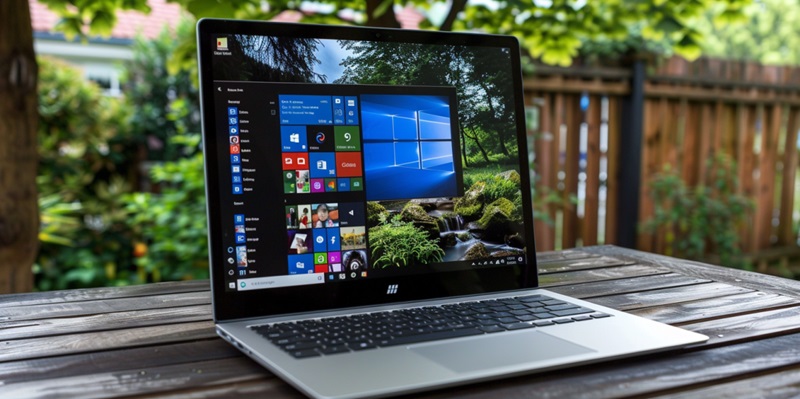In an unusual move, Microsoft has announced plans to extend support for Windows 10 beyond the previously announced end-of-life in 2025. This decision underscores the tech giant’s acknowledgment of enterprise customers’ needs for continuity and the reality that transitions to new operating systems can’t always happen overnight. The support will not come free of charge; organizations will need to pay a fee starting at $61 in the first year, with this cost likely to increase steeply in subsequent years. This creates a substantial financial inducement for businesses to prioritize upgrading to the latest OS, despite the temporary option to hang onto the familiar environment of Windows 10. Microsoft’s approach exhibits a balancing act of pushing innovation forward while accommodating the pace at which companies can adapt to change.
Long-Term Impact on Windows Ecosystem
The extension of support life for Windows 10 may have profound implications on the Windows ecosystem. There is a clear recognition from Microsoft that a one-size-fits-all approach does not apply to operating system upgrades within the enterprise sphere. By offering this lifeline, Microsoft is not only delivering a helpful solution to companies that are lagging behind in their IT strategies but is also potentially influencing the future adoption rates of Windows 11. The prospect of extended support for a legacy system could slow down the urgency for a transition or conversely, could encourage companies to delay moving to newer systems knowing that a safety net exists. However, Microsoft will be attempting to balance this by making the ongoing support cost-prohibitive in the long term, thereby subtly nudging companies toward migration.
Innovations in Windows 11
Windows 11 is undergoing an evolution, particularly evident in its test builds, which showcase a revamped “All Apps” section. This new design draws heavily from mobile user interfaces, highlighting Microsoft’s drive toward intuitive navigation and heightened touch interactivity. Such innovation mirrors a wider paradigm shift within the tech industry, which favours interfaces that fluidly cater to a range of devices, from traditional PCs to touch-centric laptops and tablets. This modernized UI reflects an understanding of current user interaction trends and indicates that Microsoft is proactively adapting to maintain the relevance of its OS. As Windows 11 continues to mature, users are set to encounter an operating system that seamlessly aligns with the mobile-first direction the market is headed. Microsoft’s ongoing updates promise to ensure Windows remains a strong contender in an era dominated by the need for adaptable and user-friendly technology.
Emphasis on User-Centric Design
Microsoft’s renovation of the ‘All Apps’ section in Windows 11 reflects a significant shift towards a user-centric design philosophy. This update exemplifies a commitment to creating a seamless and visually appealing interface, emphasizing productivity alongside a superior user experience. These changes are more than aesthetic; they represent a strategic move to accommodate future innovations in personal computing technology.
Indeed, the improved touch-friendly nature of the interface points to Microsoft’s anticipation of evolving user interactions with devices such as foldable screens, tablets, and perhaps even an expanded synergy with mobile technology. The redesign underlines an adaptable approach, preparing Windows 11 to meet not only current user needs but also to embrace potential future developments in the way we use computers. In effect, Microsoft is shaping an operating system that melds functionality with a keen foresight into the dynamic landscape of personal technology use.
Application Updates and Deals
The Windows software landscape is evolving with a fresh approach to attract users through financial incentives. Essential productivity apps are witnessing significant cost reductions; for instance, the private diary app Diarium and the note-taking software Scrble Ink, optimized for touch and stylus input, are now more affordable. This pricing adjustment aims to boost adoption and frequent use of productivity-enhancing applications on the Windows platform. For consumers, this trend presents a prime opportunity to adopt new, powerful tools at lower prices. These discounted apps could be vital in streamlining their daily tasks, thereby improving efficiency and productivity. Amid these markdowns, those using the Windows system have a prime chance to enrich their software collection without straining their wallets, potentially transforming their work habits for the better.
Progress in Media Compatibility
The release of the beta version of Dropbox for Windows, alongside a lite version, provides users with more versatility in how they manage their files. Furthermore, the update of Media Player Classic – Home Cinema to version 2.2.0, now with support for H.266/VVC video files, exemplifies the advancement in media compatibility and accessibility for the user base. Another user-centric development is the introduction of the dark theme for SimpleWall’s latest version, catering to the visual preferences as well as system integration. These updates indicate that application developers are keenly focusing on improving user experience through better support for cutting-edge file formats and customizable interfaces, ensuring that users have access to the most advanced and comfortable tools available for their Windows-powered devices.

